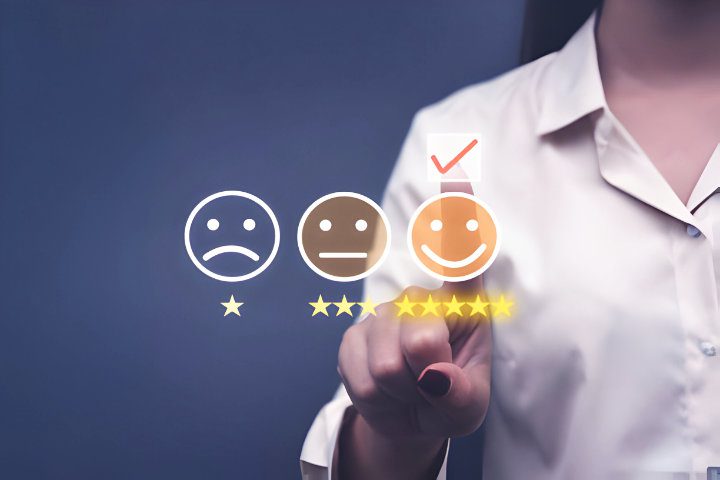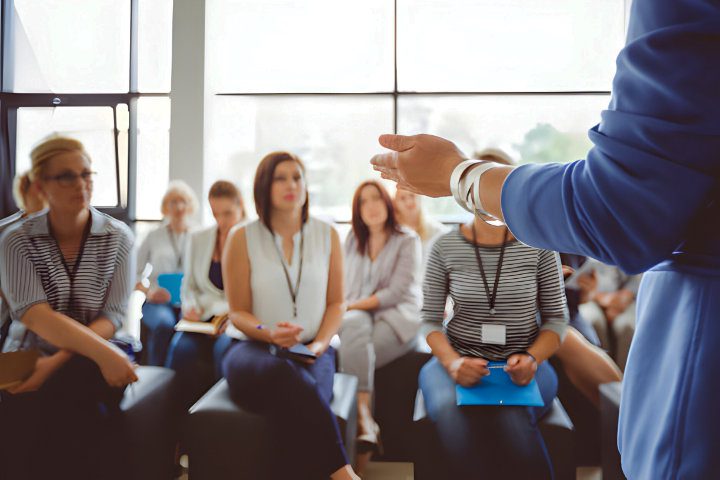Social Learning Theory
Albert Bandura developed the Social Learning Theory in the 1960s. This crucial idea in psychology and communication studies examines how people pick up skills through imitation and observation of others. UGC-NET aspirants in mass communication and journalism must understand this theory, as it offers insights into the influence of media content on behavior and learning processes.
This theory is relevant in India due to its diverse media landscape and the media’s significant role in shaping social behaviors and norms. This exploration will examine social learning theory, focusing on its key concepts, applications, strengths, limitations, and relevance in the context of Indian media and communication.
Key Concepts of Social Learning Theory
1. Observational Learning
2. Modeling
3. Vicarious Reinforcement
4. Self-efficacy
5. Reciprocal determination
Let’s examine each of these concepts in detail:
Observational Learning
This is the core idea that people can learn new behaviors by watching others perform them. It doesn’t require direct experience or reinforcement; individuals can acquire new skills or knowledge simply by observing others.
Example: Children learn social norms and behaviors by watching popular television characters.
Modeling
This refers to the process of demonstrating behavior that others can imitate. Models can be live (in person), symbolic (in media), or verbal (through instructions). Effective models are typically perceived as competent, prestigious, or similar to the observer.
Example: Celebrities in advertisements modeling the use of certain products or lifestyle choices.
Vicarious Reinforcement
This occurs when an individual sees others being rewarded or punished for certain behaviors and adjusts their own behavior accordingly. It allows people to learn from the consequences experienced by others without having to experience those consequences themselves.
Example: Viewers learn about social consequences by watching the outcomes of characters’ actions in TV dramas.
Self-efficacy
This concept relates to an individual’s belief in their ability to succeed in specific situations or accomplish a task. High self-efficacy can influence a person’s choice of activities, effort levels, and persistence in facing obstacles.
Example: Inspirational stories in media boost viewers’ confidence in their ability to overcome challenges.
Reciprocal Determinism
According to this principle, both personal factors and the social environment influence an individual’s behavior. It emphasizes the interactive relationship between cognitive, behavioral, and environmental influences.
Indian Example: The interplay between media content, social norms, and individual behaviors shapes attitudes toward social issues.
Applications of Social Learning Theory
Let’s explore how this theory can be applied to various scenarios in the Indian context:
Public Health Campaigns

This example illustrates how social learning theory can be applied to public health campaigns in India, particularly in promoting hygiene practices and COVID-19 safety measures.
- Observational Learning: In this scenario, educational videos teach proper hygiene practices. Viewers can learn new behaviors by watching these instructional videos, such as correct handwashing techniques or mask-wearing. This method is particularly effective in India, where visual communication can overcome language barriers and reach a wide audience.
- Modeling: By having well-known celebrities demonstrate COVID-19 safety measures in public service announcements, the campaign leverages the principle of modeling. In India, where film stars and cricket players often have significant influence, seeing these admired figures following safety protocols can encourage viewers to imitate these behaviors. This approach can be especially powerful in promoting new habits like social distancing or using hand sanitizers.
- Vicarious Reinforcement: This application demonstrates the benefits of adopting healthy behaviors through different media formats. A TV show or social media campaign may show characters adhering to health guidelines and remaining safe and healthy, while those who do not experience negative outcomes. This enables the audience to gain insights from others’ experiences without experiencing firsthand consequences.
Educational Programming

- Observational Learning: Educational programs on television or digital platforms can teach academic concepts to children through engaging content.
- Self-efficacy: Programs that showcase real student success stories can significantly boost viewer confidence. For example, a series highlighting students from diverse backgrounds who have overcome challenges to achieve academic success can inspire viewers.
- Reciprocal Determinism: This concept is illustrated through the interaction between educational content, school environment, and student behavior. For instance, educational content (like TV shows or online courses) influences student behavior and knowledge.
Advertising and Consumer Behavior

- Modeling: Social media influencers demonstrate product use, leveraging the modeling principle of social learning theory. For instance, a beauty influencer might showcase a step-by-step skincare routine using specific products. Viewers observe these demonstrations and are likely to imitate the behavior, especially if they admire or relate to the influencer.
- Vicarious Reinforcement: Advertisements that show social approval for using certain products utilize the concept of vicarious reinforcement. Viewers learn that using the product may lead to positive social outcomes, encouraging them to purchase and use it themselves.
- Self-efficacy: Marketing campaigns that boost consumers’ confidence in their ability to use products tap into the self-efficacy aspect of Social Learning Theory. This could involve tutorials, or how-to guides that make product use seem easy and accessible.
Strengths of Social Learning Theory
1. Comprehensive: Social Learning Theory covers cognitive and behavioral aspects of learning, offering a complete view of how people gain knowledge and skills. Learning involves both external behaviors and internal thought processes. The theory examines how individuals interpret and process observed behaviors before imitating them. This approach makes it useful in various learning situations.
2. Practical Applications: The theory provides useful insights for education, marketing, and behavior change campaigns. In education, it guides teaching methods that use modeling and observational learning. In marketing, it directs strategies for influencer partnerships and product demonstrations. It offers strategies to use social influence and vicarious reinforcement to encourage positive behaviors in behavior change campaigns.
3. Flexibility: Social Learning Theory applies to different media formats and contexts. It applies to traditional media, such as television, print, and newer digital and social media platforms. This flexibility allows adaptation to evolving technologies and social norms. For instance, the principles can be applied equally to a classroom setting, a television commercial, or a viral social media challenge.
4. Focus on Social Context: The theory highlights the important impact of social influences on learning. It acknowledges that people learn socially under the influence of family, friends, the media, and cultural norms. This emphasis on social context makes the theory particularly relevant in understanding complex social behaviors and developing strategies for social change.
Limitations of Social Learning Theory
1. Oversimplification: Social learning theory offers useful insights but may oversimplify the complex nature of human learning and behavior. Learning involves complex interactions among cognitive, emotional, biological, and environmental factors that the theory may not fully address. It may not clearly explain why some behaviors are imitated while others are not or how individuals combine multiple, sometimes conflicting, observed behaviors.
2. Individual Differences: The theory fails to adequately consider how personality traits, genetic factors, or cognitive abilities influence learning. Some individuals may be more influenced by social factors or may interpret observed behaviors in varied ways. Introverted individuals may be less inclined to mimic socially outgoing behaviors, even when they see positive results. The theory may overlook the impact of individual differences by concentrating on social factors.
3. Ethical Concerns: The theory highlights the responsibility of media and social influences in shaping observed learning behaviors. This is especially important in today’s social media and influencer culture. Concerns exist regarding the negative impacts of modeling harmful or risky behaviors, particularly on vulnerable groups such as children. The theory does not guide on these ethical issues.
4. Cultural Variations: Social Learning Theory recognizes the significance of social context but may require further adaptation to fully address diverse cultural contexts. Learning processes and appropriate behavior can differ greatly between cultures. The focus on individual achievement in Western cultures compared to collective harmony in many Eastern cultures can influence the perception and imitation of certain behaviors. The theory, mainly developed in a Western context, may not fully capture these nuances without adjustments.
Social Learning Theory in the Digital Age
The theory has gained new dimensions in the era of digital media:
1. Social Media Influence: Platforms like Instagram and TikTok have become powerful observational learning and modeling channels. Users can observe a wide range of behaviors, skills, and attitudes from people worldwide. For instance, fashion trends spread rapidly as users observe and imitate styles showcased by influencers.
2. User-Generated Content: The line between observer and model has blurred in the digital age. Users can easily create and share content, becoming models themselves. This democratization of content creation means individuals can showcase their learning journeys, potentially inspiring others.
3. Virtual Learning Environments: Online platforms provide new opportunities for vicarious experiences, a key component of social learning theory. For example, Massive Open Online Courses (MOOCs) enable learners to observe expert instructors and interact with peers globally.
4. Algorithmic Content Curation: Personalized content delivery through algorithms introduces a new factor in social learning processes. Users are exposed to models and behaviors that algorithms deem relevant to them, potentially reinforcing existing behaviors or interests.
Case Study: Social Learning Theory and Reality TV
Let’s apply the theory to the popularity of talent-based reality shows in India:
- Observational Learning: Viewers learn performance skills by watching contestants
- Modeling: Successful contestants serving as role models for aspiring performers
- Vicarious Reinforcement: The audience learns about the rewards of hard work and talent through contestants’ journeys
- Self-efficacy: Inspirational stories boosting viewers’ confidence in pursuing their dreams
- Reciprocal Determinism: The show’s content, societal attitudes towards talent, and individual aspirations influence behaviors.
This case demonstrates how Social Learning Theory can be applied to understand the potential impact of popular television formats on viewers’ behaviors and aspirations.
Criticism and Evolution
While Social Learning Theory has been influential, it has faced criticism for potentially oversimplifying the complex process of human learning. Critics argue that it may not fully account for intrinsic motivation or the role of cognitive development in learning processes.
In response to these criticisms, Bandura and other researchers have refined the theory, incorporating concepts like self-regulation and developing more nuanced understandings of how cognitive processes mediate observational learning.
Conclusion
Social Learning Theory focuses on observational learning and modeling, making it essential for understanding media effects. UGC-NET aspirants must master this theory for exam success and to understand how media content influences behaviors and attitudes in the diverse Indian social context.
As we’ve seen, the theory can be applied to various scenarios in India’s media landscape, from public health campaigns to reality TV shows. Although it has limitations in capturing the complexities of human learning processes, it remains a valuable framework for analyzing the potential impacts of media content on viewer behavior.
Social Learning Theory’s insights into learning through observation are still relevant in today’s diverse media landscape and user-generated content. The theory highlights the important responsibility of media producers and content creators to provide positive models and demonstrate constructive behaviors.
UGC NET Preparation Tips
1. Understand the key concepts of Social Learning Theory, especially observational learning, modeling, and vicarious reinforcement.
2. Be familiar with how the theory explains the influence of media on behavior.
3. Practice applying the theory to various media scenarios in the Indian context.
4. Consider how the theory might be adapted or challenged in the context of modern digital media consumption.
5. Critically consider the theory’s strengths and limitations in explaining media effects in diverse cultural settings like India.




